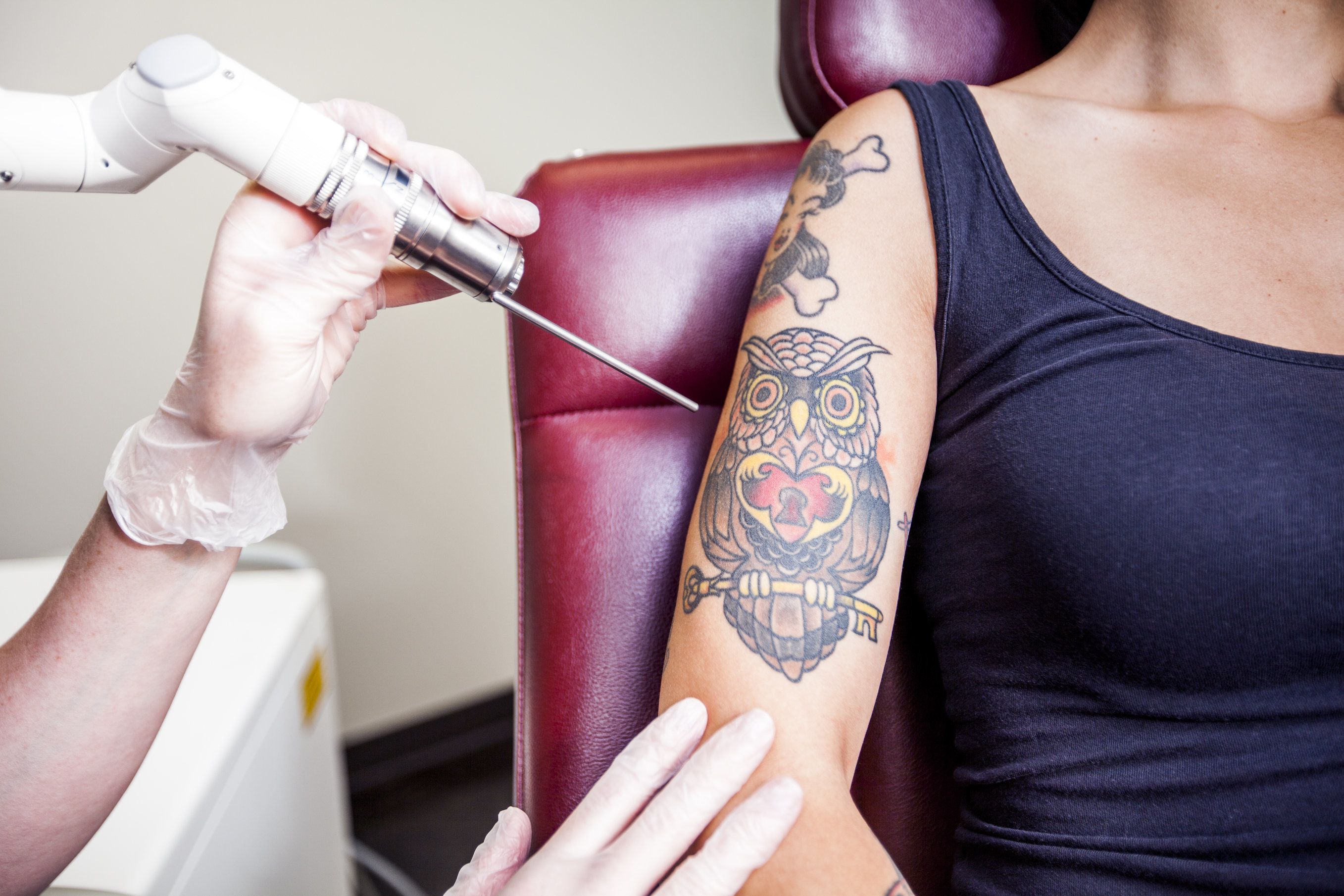Laser tattoo removal has become a popular and effective method for eliminating unwanted tattoos. The choice of laser technology plays a crucial role in the success of the treatment. This article will explore the different types of lasers used for tattoo removal and their characteristics.
Q-Switched Nd:YAG Laser

This is one of the most commonly used lasers for tattoo removal. It emits short pulses of energy that shatter the tattoo pigment particles. The Q-Switched Nd:YAG laser is particularly effective for removing dark-colored tattoos, such as black and blue.
Advantages:
- Versatile and effective for a wide range of tattoo colors.
- Relatively affordable compared to some newer laser technologies.
- Suitable for most skin types.
Disadvantages:
- May require multiple sessions for complete removal, especially for stubborn or multi-colored tattoos.
- Can cause some discomfort during the procedure.
Alexandrite Laser
The Alexandrite laser is primarily used for removing red and purple tattoos. It emits a longer wavelength of light that is specifically absorbed by these pigments.
Advantages:
- Highly effective for removing red and purple tattoos.
- Can be used on a wider range of skin tones compared to some other lasers.
- Often less painful than Q-Switched Nd:YAG lasers.
Disadvantages:
- May not be as effective for other colors, such as black and blue.
- Can be more expensive than Q-Switched Nd:YAG lasers.
Picosecond Laser
Picosecond lasers are a newer technology that deliver ultra-short pulses of energy. This allows for more precise targeting of the tattoo pigment, reducing the risk of damage to surrounding tissues. Picosecond lasers are particularly effective for removing stubborn tattoos, including those with multiple colors.
Advantages:
- Highly effective for removing stubborn and multi-colored tattoos.
- Minimizes the risk of side effects, such as scarring.
- Can be used on a wide range of skin tones.
Disadvantages:
- Can be more expensive than older laser technologies.
- May require more treatment sessions for some tattoos.
Ruby Laser
Ruby lasers were among the first lasers used for tattoo removal. While they are still used in some cases, they have been largely replaced by newer technologies due to their limitations.
Advantages:
- Can be effective for removing red tattoos.
Disadvantages:
- Can be painful and may cause significant discomfort.
- Limited effectiveness for other colors.
Choosing the Right Laser
The best laser for your tattoo removal treatment will depend on several factors, including:
- Tattoo color: Different lasers are more effective for specific colors.
- Skin tone: The laser should be chosen to minimize the risk of side effects for your skin type.
- Tattoo size and density: Larger and denser tattoos may require more powerful lasers.
- Individual preferences: Consider your pain tolerance and budget when choosing a laser.
It’s important to consult with a qualified dermatologist or plastic surgeon to determine the most suitable laser technology for your specific needs. They can assess your tattoo and recommend the best treatment plan.


